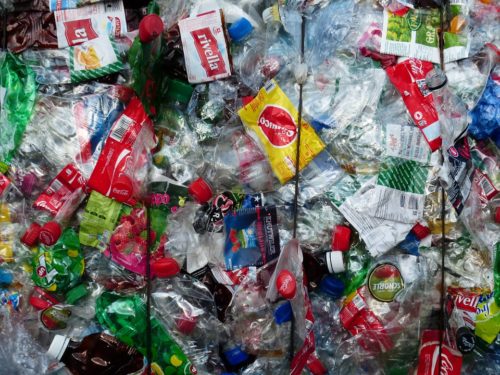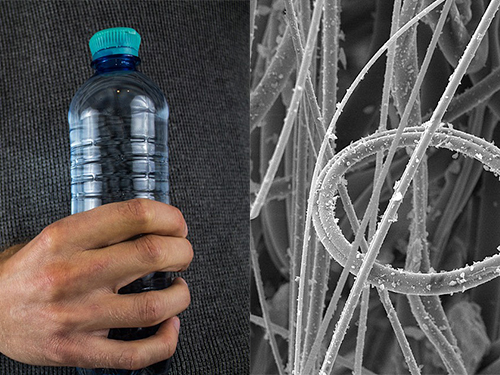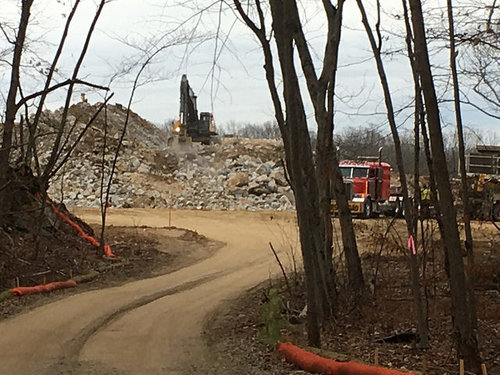As Easter approaches, Food Tank wants to share some ideas on how to have a more healthful and sustainable holiday.
1. Locally sourced eggs
If you choose to celebrate with real eggs, support your local farmer and buy eggs from pasture-raised chickens. Eggs from pasture-raised hens are healthier for you, containing more vitamin A, vitamin E, and omega-3 fatty acids, according a report conducted by the Sustainable Agriculture Research and Education (SARE) program, which is funded by the U.S. Department of Agriculture.
If you choose to celebrate with real eggs, support your local farmer and buy eggs from pasture-raised chickens. Eggs from pasture-raised hens are healthier for you, containing more vitamin A, vitamin E, and omega-3 fatty acids, according a report conducted by the Sustainable Agriculture Research and Education (SARE) program, which is funded by the U.S. Department of Agriculture.
2. Alternatives to Easter eggs
There are many alternatives to using real eggs for Easter celebrations; for instance, the White House traditionally uses decorated wooden eggs for its annual Easter Egg Roll. There are also plastic Easter eggs that are compostable, and ceramic Easter eggs that are dyeable!
There are many alternatives to using real eggs for Easter celebrations; for instance, the White House traditionally uses decorated wooden eggs for its annual Easter Egg Roll. There are also plastic Easter eggs that are compostable, and ceramic Easter eggs that are dyeable!
3. Blown eggs
Blown eggs are another reusable dyeable option. Blown eggs are made of real eggs whose yolks and whites have been removed. Here is a tutorial. The leftover yolks and whites can then be used for baking, scrambled eggs, or other cooking projects.
Blown eggs are another reusable dyeable option. Blown eggs are made of real eggs whose yolks and whites have been removed. Here is a tutorial. The leftover yolks and whites can then be used for baking, scrambled eggs, or other cooking projects.
4. Homemade egg decorating
There are many methods to make homemade egg dyes, using vinegar and spices, fruits, and vegetables. Check out these instructions from Real Simple!
There are many methods to make homemade egg dyes, using vinegar and spices, fruits, and vegetables. Check out these instructions from Real Simple!
5. Prevent food waste
If you hard boil fresh eggs before you dye them, the prospect of eating all of those hardboiled eggs may be daunting, but throwing them out is wasteful. Turn the eggs into a delicious dish: here are some ideas!
If you hard boil fresh eggs before you dye them, the prospect of eating all of those hardboiled eggs may be daunting, but throwing them out is wasteful. Turn the eggs into a delicious dish: here are some ideas!
6. Avoid plastic Easter grass
Cellophane Easter grass, often found in Easter baskets, cannot go into the recycling bin. If you already have Easter grass, reuse it. If you were going to buy some for Easter baskets, try replacing it with shredded newspaper or tissue paper.
Cellophane Easter grass, often found in Easter baskets, cannot go into the recycling bin. If you already have Easter grass, reuse it. If you were going to buy some for Easter baskets, try replacing it with shredded newspaper or tissue paper.
7. Give children stuffed toys instead of live Easter bunnies and chicks
Dyed Easter chicks are a perennially controversial topic: chicks are dyed while in the egg or sprayed shortly after hatching. The food coloring used to dye the chicks is non-toxic, but the real concern is what happens to the chicks after the dye wears off. Chicks are sold as seasonally-themed pets, most of whom are discarded or neglected after they molt and lose their artificially colored feathers.
Rabbits are also common Easter gifts: just as with chickens, rabbits are often neglected, surrendered to animal rescues, or released into the wild when the novelty wears off. The American Society for the Prevention of Cruelty to Animals recommends giving children stuffed or chocolate bunnies instead of live animals, as rabbits can live seven to ten years on average and are a serious commitment. The Make Mine Chocolate! campaign also strives to educate the public on the realities of rabbit ownership.
Dyed Easter chicks are a perennially controversial topic: chicks are dyed while in the egg or sprayed shortly after hatching. The food coloring used to dye the chicks is non-toxic, but the real concern is what happens to the chicks after the dye wears off. Chicks are sold as seasonally-themed pets, most of whom are discarded or neglected after they molt and lose their artificially colored feathers.
Rabbits are also common Easter gifts: just as with chickens, rabbits are often neglected, surrendered to animal rescues, or released into the wild when the novelty wears off. The American Society for the Prevention of Cruelty to Animals recommends giving children stuffed or chocolate bunnies instead of live animals, as rabbits can live seven to ten years on average and are a serious commitment. The Make Mine Chocolate! campaign also strives to educate the public on the realities of rabbit ownership.
8. Make a locally sourced Easter meal
If it’s your tradition to have an Easter meal, why not try to make as many of the dishes as you can from local food? Check Local Harvest for your nearest farmer or farmers market.
If it’s your tradition to have an Easter meal, why not try to make as many of the dishes as you can from local food? Check Local Harvest for your nearest farmer or farmers market.
9. Visit a local farm
Take the time to bring your family to a nearby farm. Children and adults will get an up-close look at how their food gets from the farm to home. Be sure to contact the farmers ahead of time! Here’s another link to Local Harvest with helpful things to remember before your visit.
Take the time to bring your family to a nearby farm. Children and adults will get an up-close look at how their food gets from the farm to home. Be sure to contact the farmers ahead of time! Here’s another link to Local Harvest with helpful things to remember before your visit.
10. Instead of an Easter basket, Easter plants
Check your local nursery for seeds or seedlings and give friends and loved ones a reusable Easter gift: a homemade herb garden.
Check your local nursery for seeds or seedlings and give friends and loved ones a reusable Easter gift: a homemade herb garden.
11. Give a donation to Heifer International
If giving plants is not your style, consider making a donation to Heifer International or a similar non-profit to fight poverty while providing an animal to a family in a developing nation.
If giving plants is not your style, consider making a donation to Heifer International or a similar non-profit to fight poverty while providing an animal to a family in a developing nation.
12. Minimize packaging with candy and treats
Choose Easter treats with less packaging to cut down on the amount of waste generated by the holiday festivities.
Choose Easter treats with less packaging to cut down on the amount of waste generated by the holiday festivities.
13. Reuse your existing plastic eggs
If you still have a treasure trove of plastic eggs at home, there are plenty of ideas online for upcycling. From tea candle holders to a set of toy teacups to sophisticated Easter decorations, there are many great tutorials online.
If you still have a treasure trove of plastic eggs at home, there are plenty of ideas online for upcycling. From tea candle holders to a set of toy teacups to sophisticated Easter decorations, there are many great tutorials online.
Happy Easter!
Also, in case you missed it, check out our 5 Ways to Make Your Passover Seder More Sustainable
This column was written by Food Tank: The Food Think Tank‘s Danielle Nierenberg and Katie Work.














